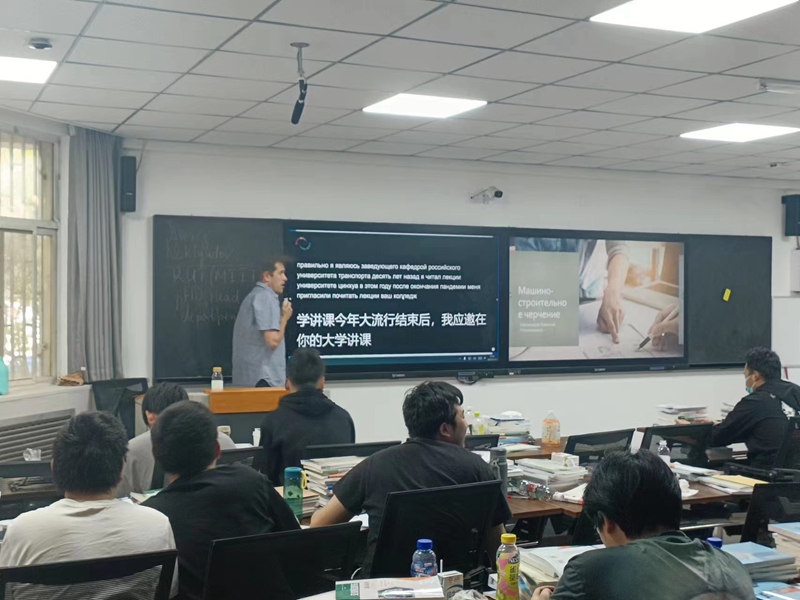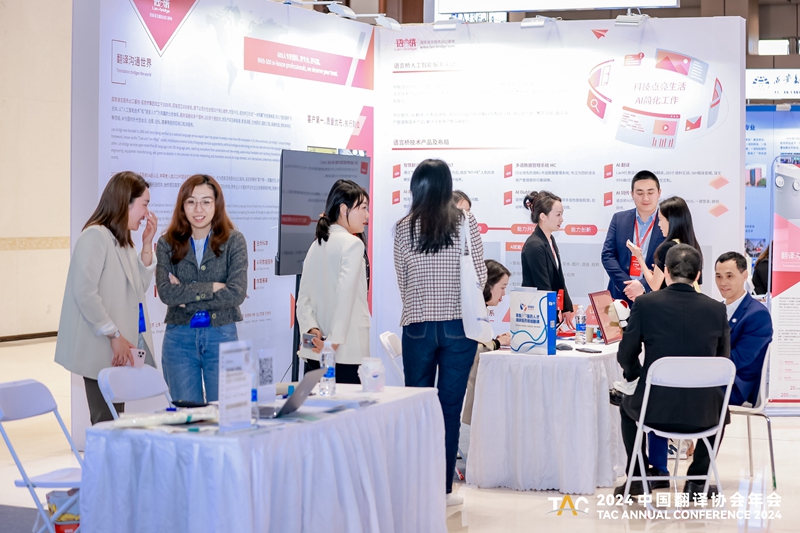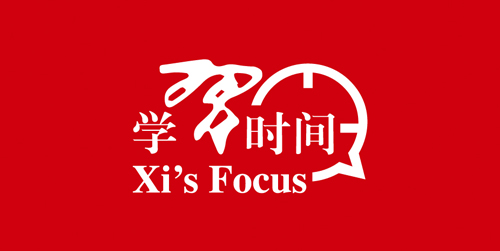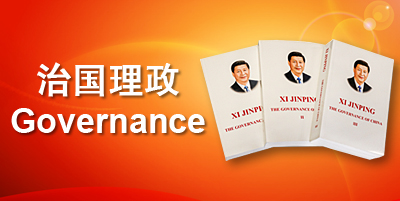Currently, the rapid evolution of artificial intelligence (AI) is reshaping the translation service industry.
"In 2023, 839 translation companies in China made use of AI-based translation technology—an increase of 251 from the year before," Cheng Wei, Vice President of the Translators Association of China (TAC), said at the association's 2024 conference.
Founded in 1982, the TAC represents professional translators and interpreters nationwide through its more than 7,000 institutional members, 10,000 individual members, and 18 committees covering areas including science and technology, literature and arts, social sciences, legal affairs, ethnic minority languages, translation studies and teaching, interpreting and more. This year's TAC annual conference took place in Changsha, Hunan Province, from March 30 to 31.
Cheng said AI-based translation technology serves not only China's translation and interpretation community itself, but also the country's international exchange and cooperation. "The rapid advancement in implementing the Belt and Road Initiative (BRI) entails a huge demand for foreign language professionals, but we are facing a shortage of skilled translators in languages such as Arabic and Russian," Cheng said. "The new technology will no doubt be of great service to facilitating Belt and Road cooperation." The BRI is a China-proposed initiative to boost connectivity along and beyond the ancient Silk Road routes.
During the conference, the China International Communications Group (CICG) launched the Second Translation Technology Competition. The annual competition tests competitors' literacy of translation technologies with a focus on their ability to give precise prompts to the AI including relevant terms and keywords, as well as to edit and polish the AI-generated texts. Winners will receive prize money and access to the state-of-the-art AI translation applications.
"Popularizing the use of AI-based translation technology will be an important part of our future work, as without widespread application and authentic feedback from users, the improvement of the technology will slow down," Cheng said.
The evolving technology
"At present, more than 50 percent of the industry's projects have used machine translation along with human translators, and more than 80 percent of enterprises in the sector have embraced the latest trend in translation—the Large Language Models (LLMs)," Huang Yulong, Director of CICG Academy of Translation and Interpretation, said at the conference.
LLM refers to a computational system capable of learning language naturally, allowing it to produce, interpret and process language. This type of model has a large number of parameters and can learn language patterns and professional knowledge from large-scale online text data.
Machine translation has gone through three critical periods, the first (1950s-60s) required humans to input hundreds of specific rules concerning language and translation, which the machine will then strictly enforce. However, this was not cost effective due to the labor needed to input the rules and check the resulting translations.
In the second period (1960s-80s), machines were capable of capturing some knowledge from databases automatically, and the cost was significantly reduced. "However, problems such as a lack of authenticity, cultural awareness and communicative skills emerged," He Zhongjun, Chair of the Baidu Artificial Intelligence Technical Committee, said at the conference, adding that the third and current phase, dominated by LLMs, has greatly improved the quality of translation by automatically capturing grammar, semantics and pragmatic information from the related corpora. Tech giant Baidu is one of China's top AI developers.
For example, the latest version of Baidu Translation service is multi-functional, according to He. Prior to the translation of a text, the user can upload reference materials and input the requirements for the final product. Having perused the materials fed, Baidu Translation will surf the corpus and the Internet to verify the information available and search for additional background knowledge. After translating the text, the service will help with post-editing according to the user's further instructions, and it is also ready to answer any questions about its translation style and use of words. Other customized services include multilingual translation, giving type-setting advice based on contents and switching between language styles or registers.
While highlighting its level of authenticity and cultural awareness, He showcased the improvement Baidu Translation demonstrates compared to previous systems in translating Internet slang. Baidu Translation successfully translated zei6, a Chinese Internet phrase frequently used by Gen Zs that would have been directly translated as thief six by previous translation systems, because zei is the exact pronunciation of the Chinese character that means thief according to China's pinyin romanization system. Actually, its correct meaning is "very good at."
Specific requirements
Wu Juan, Vice President of Cloud Translation Technology, an AI technology company in Shenzhen, Guangdong Province, that focuses on translation and localization solutions, said the company is committed to using machine translation technology based on neural machine translation (NMT) and LLMs to provide extensive application and technical support for the internationalization of businesses, smart teaching in tertiary institutions and simultaneous interpretation.
LLM and NMT are the two core technologies used in translation today. NMT is a form of machine translation that uses an artificial neural network to complete the translation. After more than 20 years of development, it is a mature technology that is widely applied.
"At present, NMT has certain economic advantages over LLMs, but the latter has been used to train translation engines for less than a year. Based on our training outcomes, we've found it can compensate for the shortcomings of NMT in maintaining consistency in understanding long articles, translation of literary works, creative translation, and many other areas. So we believe LLMs will prevail in the future as soon as it is as cost effective as NMT," Wu told Beijing Review.
Cloud Translation Technology has developed a multilingual simultaneous interpreting system for meetings and teaching based on NMT, and they are working toward incorporating LLMs into it.
"The development of AI-based translation and interpreting system will bring benefits for cooperation between countries in a lot of fields, especially education," Wu said. "Since most Chinese students choose English as their foreign language, they might not be prepared to participate in programs delivered in other languages. The AI technology helps students overcome any barriers between languages, and the LLM technology will surely be more helpful."
Wu underscored that future research on machine translation should place more attention on specialization in particular categories and areas where large numbers of technical terms are used. "We believe by working in this direction, the fluency, professionalism and speed of machine translation will improve. And it will better cater to the needs of enterprises," she said.
Cloud Translation Technology's translation engine is being carefully categorized and trained accordingly. At present, it covers 20 fields, including machinery, finance, information and communications technology, politics and diplomacy, and aerospace.
"We will further refine our translation engine according to customer needs, and provide tailored services for different business units." Ding Li, Board Chair of Cloud Translation Technology, told Beijing Review.
In addition to tailor-made services, Wu said the trained, privately deployed translation engines are particularly popular with technology and finance giants, as well as government departments and military agencies, because of their security and confidentiality.
"We train translation engines and help customers set them up on discrete servers. If they don't use privately deployed engines, their intellectual property and trade secrets are at risk of leaking and, in some cases, there are national security concerns," Wu said.
On March 15, Cloud Translation Technology signed a partnership agreement with Huawei, one of China's largest tech firms, to build a traditional Chinese medicine translation model, aiming to facilitate the transformation and overseas promotion of China's centuries-old medical knowledge.

A Russian teacher gives a lecture at a vocational college in Zhengzhou, Henan Province, using a simultaneous interpreting system on April 19, 2023 (COURTESY PHOTO)
Way to go
Despite the remarkable accomplishments of Chinese translation institutions, there is a technological gap between China and some developed countries, which started exploring AI earlier than China did, according to Wang Huashu, Secretary General of the Translation Technology Committee of the TAC.
"Some products designed by other countries have advantages over ours in terms of diversity of functions, user experience, the degree of intelligence, and the quality of translation," Wang said, adding that Chinese enterprises need to increase investment in research and development, as well as cultivate more high-caliber professionals.
Participants at the conference also discussed how to address challenges arising from the development of AI to the translation and interpretation community, including technological obstacles, ethical and moral issues, regulations and standards, the protection of intellectual property rights and data security.
For example, one of the major problems with AI translation is AI hallucination, which refers to AI's occasional inclination to provide user with false, irrelevant or confusing information. In some cases, the AI produces rhetorical and flamboyant texts.
Pan Jun, associate head of the Department of Translation, Interpreting and Intercultural Studies at Hong Kong Baptist University, offered her insight on drawbacks of AI translation at the conference. "So far, most popular AI translation products draw from a corpus that mainly consists of texts written by white people, leading to concerns over biased output," Pan said. "We should make full use of our resources in the fields of humanities and sociology to cope with this challenge, and put more effort into the development of AI's analytical and communication skills in dialogues."
Another challenge identified by the participants is the training of future translators. "There is no doubt that future translators should be equipped with the necessary knowledge and skills to use AI-based translation technology in their work, but as teachers, we need to think about when and how to properly introduce the latest technologies to them without dousing their interest in learning basic language knowledge and improving their core skills, as this is likely to happen," Pan said.
Copyedited by G.P. Wilson
Comments to zhangyage@cicgamericas.com
















